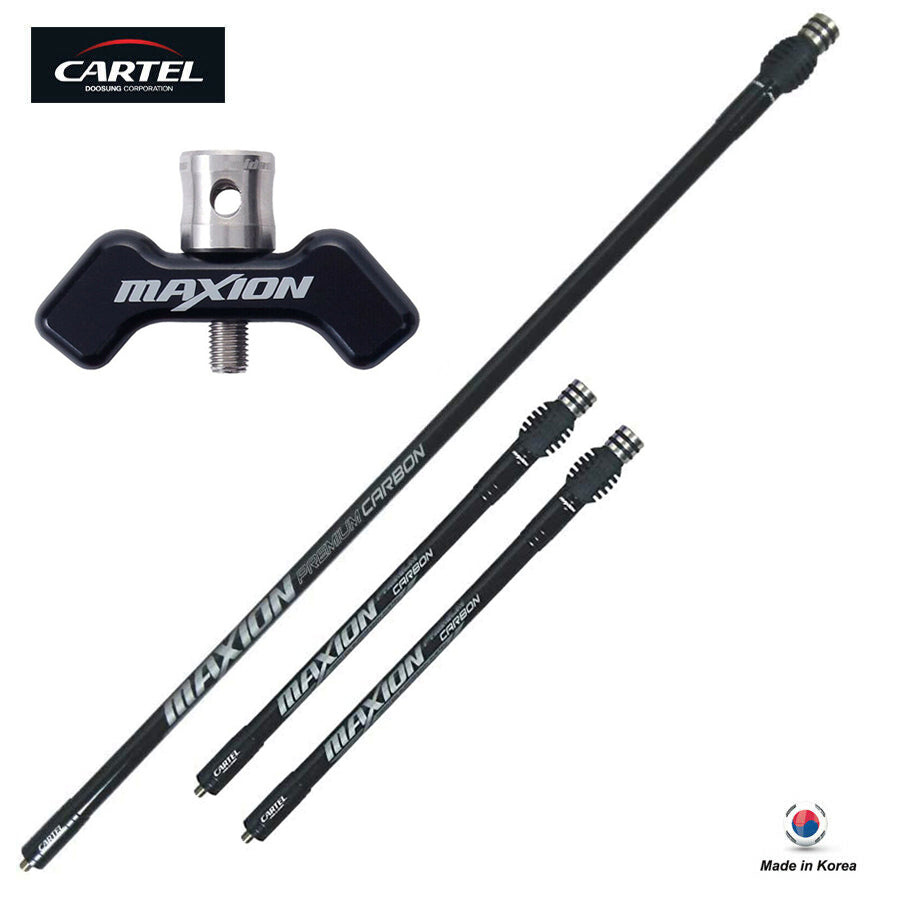Maximize Your Archery Accuracy With These Bow Stabilizer Strategies
In the realm of archery, accomplishing ideal precision is a search that demands precise focus to detail and method. One vital component that can substantially impact your efficiency is the proper use of bow stabilizers. These often-overlooked accessories hold the possible to elevate your capturing efficiency to brand-new elevations, but just if used correctly. By discovering the nuanced methods of choose, installing, and adjust bow stabilizers, archers can open a realm of precision that may have formerly eluded them. Whether you are a seasoned archer looking to refine your abilities or a novice anxious to improve your accuracy, mastering these bow stabilizer techniques could be the key to striking your mark with unmatched uniformity.
Benefits of Using Bow Stabilizers
Using bow stabilizers can significantly boost an archer's accuracy and overall performance by decreasing bow torque and resonance. Bow torque, brought on by the unequal circulation of weight in the bow, can cause disparities in shot placement. By attaching a bow stabilizer, the weight is redistributed, lowering the impacts of torque and helping the archer achieve a more constant shot. In addition, bow stabilizers wet resonance, which not just boosts the convenience of shooting yet also prevents the bow from leaping upon launch, hence helping in maintaining correct aim.
In addition, bow stabilizers can help in holding the bow consistent, especially during gusty problems or when firing from longer distances. The included weight at the front of the bow gives stability and balance, enabling the archer to concentrate on aiming without the diversion of bow activity. Overall, the benefits of utilizing bow stabilizers expand beyond just precision, boosting the archer's experience and performance in various shooting situations.
Picking the Right Bow Stabilizer
Choosing the proper bow stabilizer is important for enhancing your archery devices and improving shooting efficiency. Larger stabilizers can assist minimize bow torque and take in more resonance, leading to a steadier goal.

Last but not least, consider the style of the stabilizer. Some stabilizers feature adjustable weights or dampeners that enable you to tailor the balance and feel published here of your bow. Inevitably, choosing the ideal bow stabilizer involves discovering an equilibrium between weight, length, layout, and product to improve your capturing precision and overall performance.
Proper Installment Techniques
To guarantee optimum performance and security in archery, grasping appropriate installment techniques for your bow stabilizer is vital. The initial action in mounting a bow stabilizer is to recognize the proper positioning on your bow.
Next, firmly connect the stabilizer visit this site to the bow utilizing the appropriate placing hardware. Some stabilizers come with adjustable weights that can be added or gotten rid of to make improvements the equilibrium of your bow.

Changing Stabilizer Weight and Size
After ensuring the proper setup of your bow stabilizer, the following action entails adjusting the weight and length to optimize its performance in improving archery precision. The weight of the stabilizer plays a crucial role in reducing bow motion throughout the shot cycle. Including weight to the stabilizer can aid wet vibrations and improve stability, causing even more regular and exact shots. On the other hand, reducing the weight can increase maneuverability, which is useful for circumstances needing quick target purchase.
When it comes to stabilizer size, locating the ideal balance is essential. A longer stabilizer can provide greater security by boosting the distance between the bow and the weight at the end of the stabilizer. This included range enhances the stabilizing result, particularly in windy conditions or when contending longer ranges. try this On the other hand, a shorter stabilizer offers more ability to move and may be preferred by archers that value dexterity and quick activities throughout shooting.
Advanced Stabilizer Tuning Tips
Accomplishing optimum bow stability and precision in archery requires a nuanced method to advanced stabilizer adjusting. Advanced stabilizer adjusting involves fine-tuning various parts to enhance the bow's equilibrium, decrease vibration, and boost general accuracy. One vital method is to experiment with various stabilizer setups, including back-bar and side-bar configurations, to find the ideal equilibrium between security and maneuverability for your shooting design. bow stabilizer. Furthermore, adjusting the angle and positioning of the stabilizer can have a substantial effect on how the bow responds upon release.
One more vital element of sophisticated stabilizer tuning is optimizing the damping residential properties of the stabilizer system. Checking out various materials for the stabilizer construction, such as carbon fiber or aluminum, can additionally affect the bow's efficiency by changing its weight distribution and stiffness.
Verdict
In final thought, taking full advantage of archery accuracy can be achieved with the appropriate option, setup, and adjustment of bow stabilizers. Overall, integrating bow stabilizers into archery technique can lead to enhanced performance and raised accuracy.
Using bow stabilizers can significantly improve an archer's accuracy and total efficiency by decreasing bow torque and vibration. Longer stabilizers provide better stability and equilibrium, especially for long-distance capturing, while shorter stabilizers use more convenience and are much easier to maneuver in tight rooms (bow stabilizer). Carbon fiber stabilizers are resilient and light-weight, while aluminum stabilizers are robust and give outstanding resonance moistening
A longer stabilizer can provide better stability by boosting the distance in between the bow and the weight at the end of the stabilizer.One more essential facet of advanced stabilizer adjusting is maximizing the damping residential properties of the stabilizer system.